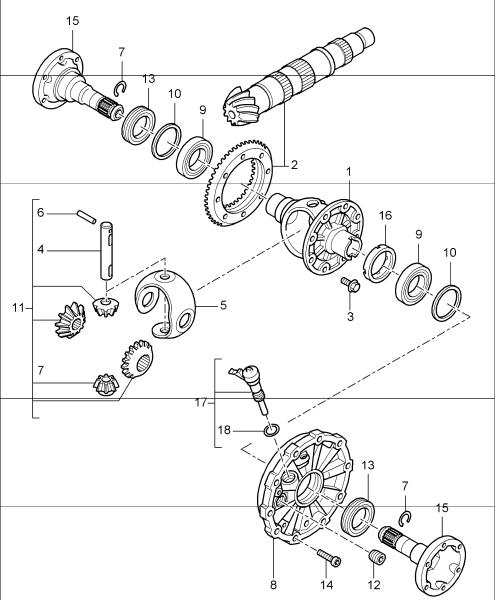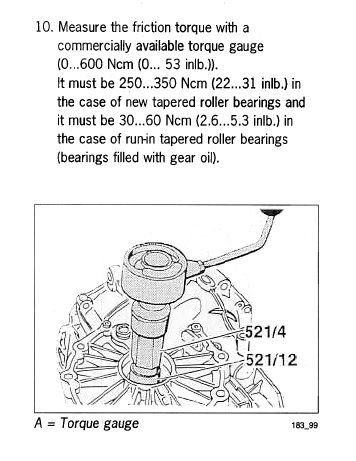Welcome to RennTech.org Community, Guest
There are many great features available to you once you register at RennTech.org
You are free to view posts here, but you must log in to reply to existing posts, or to start your own new topic. Like most online communities, there are costs involved to maintain a site like this - so we encourage our members to donate. All donations go to the costs operating and maintaining this site. We prefer that guests take part in our community and we offer a lot in return to those willing to join our corner of the Porsche world. This site is 99 percent member supported (less than 1 percent comes from advertising) - so please consider an annual donation to keep this site running.
Here are some of the features available - once you register at RennTech.org
- View Classified Ads
- DIY Tutorials
- Porsche TSB Listings (limited)
- VIN Decoder
- Special Offers
-
OBD II P-Codes - Paint Codes
- Registry
- Videos System
- View Reviews
- and get rid of this welcome message
It takes just a few minutes to register, and it's FREE
Contributing Members also get these additional benefits:
(you become a Contributing Member by donating money to the operation of this site)
- No ads - advertisements are removed
- Access the Contributors Only Forum
- Contributing Members Only Downloads
- Send attachments with PMs
- All image/file storage limits are substantially increased for all Contributing Members
- Option Codes Lookup
- VIN Option Lookups (limited)
-
Posts
8,586 -
Joined
-
Last visited
-
Days Won
190
Content Type
Profiles
Events
Forums
External Paint Colors
Downloads
Tutorials
Links Directory
Collections
Store
Posts posted by JFP in PA
-
-
There have been some video clips posted where the person uses a 9V battery as power source to test them out of the engine, but I have no experience with this type of test; if the unit does not assume an active position when energized in the engine, it has a problem.
-
If the engine isn't changing when the solenoids are activated, nothing is changing because the cam angle is not moving; the solenoids are not assuming an active position when energized.
-
Did you check your cam timing after getting all back together?
-
1 hour ago, vza said:
OK, so if I get a light it would mean my solenoids are gonzo. Correct? V
No, it means you have power on the circuit, but it doesn't mean the solenoids are functional.
-
Yes, if everything is functional and connected.
-
Yes, you can test with a light.
-
-
The oil pump is mechanically driven by the engine, you cannot "turn it on", the engine has to turn over to develop oil pressure. That said, you can pull the fuel pump fuse or relay and spin the engine over until it gets oil pressure, then reinstall the fuse or relay and you are ready to go. And yes, it is worthwhile to do,
-
 1
1
-
-
1 hour ago, Silver_TT said:
Thank you, I think you are right. The degrees make me wonder if it is a reference to the vane cell camshaft adjustor's position as this is also closely related to the ignition timing (it's job is to advance or retard it). I expect that it would be fully advanced, somewhere near 40 degrees, at WOT or high RPMs when the timing gets advanced. The numbers sound normal to me except if this is the case the 6 degrees at idle is too much.
They may be the result of a DME "tune", common aftermarket tune factors are more timing and more boost.
-
I think he is referring to ignition timing as "ignition angle".
-
OK, here goes:
It is easiest if the car is running. Yes on the pin to pin tests.
P0140: Interruption of signal on O2 sensor after the main cat on bank #1. Diagnostics are to check the continuity of the signal wires back to the DME terminal #4 at the sensor to terminal 77 at the DME; terminal 3 at the sensor to terminal to terminal 46 at the DME. Also check both wires for potential short to ground. P0160 is the same tests on the other bank sensor.
P1121 is for low heating circuit current on the sensor ahead of the cat on bank #2, again, a possible interruption or short to ground of the circuit.
It is also useful to check ALL of the O2 sensors for normal voltage curve function; the sensor behind the main cat should be drawing a fairly straight voltage curve over time, while the one ahead of the cat on the same bank should be fluctuating voltage in a sine wave fashion:
I my experience, it is very odd to have multiple O2 sensors fail all at the same time; usually this is a harness problem.
-
Not necessarily, you would have to catch it in real time to see any difference. And, as all the diagnostic tests are electrical in nature, it would be worthwhile running them to make sure you do not have a simple wiring fault.
-
P1531 indicates a problem with the cam adjuster on bank #1, indicating that it is not assuming the active position.
Possible causes:
- Open circuit on triggering wire
- Open circuit on B+ supply wire
- Faulty actuator
Diagnosis procedures:
- Check B+ power supply wire for voltage, repair wire if necessary
- Check trigger wire for continuity, repair wire if necessary
- If both are OK, replace actuator
-
I would suggest you scan the car with a diagnostic tool that can read what coolant temp the DME is seeing, if it is not seeing any temp, you have a wiring or sensor issue. If the tool sees temp at the DME, the issue is the harness between the sensor and the dash, or the display itself.
-
Welcome to RennTech

The plastic gear set in these top's mechanism are a well-known failure point, I'd start there.
-
Just tried it, may have been removed by the original poster....................
-
That is definitely not "opportunity knocking".
To replace the pinion bearing, the entire gear "tree" has to be disassembled, and some special tooling is involved as well (surprise, surprise). Another reason why for most, this is not a DIY project, but usually farmed out to one of the specialty gearbox shops.
-
1 minute ago, RRjr said:
Fair enough - thanks again for your help, will continue investigating.
And just as a by-the-by, that pinion bearing is a $500 item at retail 😮
-
2 hours ago, RRjr said:
thanks again...when I grab the pinion gear and rotate it doesn't seem to have any play side to side - feels pretty solid. Is this something I would notice moving it by hand?
Not necessarily. The other thing you need to consider is having to do it all over again if you guess wrong on which bearing it is, which is why most shops replace ALL the bearings when there is a problem.
-
And just as an observation: Noises when loading or unloading the drive line are rarely related to the side carrier bearings; the more likely suspect is the pinion bearings......
-
 1
1
-
-
Welcome to RennTech

The carrier shims are outside the carrier bearings, item #10 in this diagram:

Pre load measurement:

The backlash or free play should be in the range 0.12 to 0.22 mm. Here's a picture showing its measurement with factory tools.

Have fun..................😉
-
22 minutes ago, slowrc said:
Looking for a part number for TPMS antenna located in the four wheel wells of a 2008 Cayenne S
Welcome to RennTech

955-606-103-00
-
Either an air pocket or a disconnected or dead gauge sender.
-








Car will not start.
in 986 Boxster Convertible Top Issues and Solutions
Posted
It sounds like the timing is OK. Have you checked to see if the coil packs are getting power after you pinched the wires?